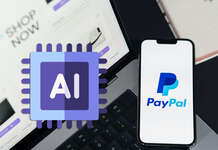The current importance of accessibility is indisputable. So much so that it is increasingly implemented in practically any sector. As our dependence on the web and digital UI UX design services increases (some companies are already abandoning analog services altogether), ensuring the web is an accessible place is crucial.
Before we delve into designing accessible online tools, we want to explain what accessibility is, why it’s important, who it affects, and the problems people face when it’s not prioritized.
What is accessibility?
Broadly speaking, we can say that accessibility allows anyone to use something, whether it is a product, a service, an experience, information, or anything else, regardless of their situation. The term is usually related to people with some type of functional diversity and, although it is not new, as the Internet relatively is, it is now more relevant than ever. Therefore, the new generation of technology professionals must be prepared to create inclusive designs that guarantee equal access for everyone.
Among the most common reasons why accessibility is necessary are visual, hearing, motor, or cognitive disabilities, although creating a truly accessible website goes much further. When designing accessible websites for children, for example, designers must put themselves in the children’s shoes and create attractive, interesting, and colorful sites that correctly guide the youngest children. On the other hand, websites intended for seniors should not contain small text or excessively technical information.
We have just revealed the content of the rest of the publication, but before delving into accessible designs for the aforementioned sectors, we are going to explain the importance of accessibility.
Why is accessibility important?
Very simple: accessibility allows everyone, regardless of age, economic level, degree of disability, or sex, to access the same services. In the case of public services, such as immigration and health, it is even more necessary that people also understand their rights.
We must strive to ensure that everyone has the opportunity to be an active member of society in all aspects, including web design.
Accessibility in web design
As we have already mentioned, the importance of the Internet has increased exponentially, especially after the COVID-19 pandemic. Suddenly, everything was done online and people with disabilities could not always access the same information or services as others. Herein lies the importance of accessibility in web design: the Internet is a tool that can be used to spread information, learn, and connect with others, but this only happens when the experience produces the same result for all users.
For something to be accessible online, it must meet the following requirements :
Perceptible: The user must be able to appreciate the information through one of their senses; For example, if the website is made up of text, it should also contain an audio option for deaf users.
Understandable: The content must be understandable to the intended audience; If you are creating a website for immigrants, ensuring that information is available in multiple languages makes this task easier.
Operable: If someone can only use the computer by voice, the website should function the same as it would for someone who can use a keyboard or mouse.
Robust: the website must function in the same way as for a person without disabilities, that is, everyone must have an equally satisfactory experience.
Are accessibility and usability the same thing?
People often use “accessibility” and “usability” interchangeably, but there are several key differences. Although they share similarities, usability focuses on the effectiveness, efficiency, and satisfaction of a design, while accessibility prioritizes that all users, regardless of their disability, can use said design correctly.
Accessible web designs
Now that we have explained what accessibility is and why it is important, especially in web design, we are going to delve into the topic with some specific cases and give you some suggestions. We will start with specific disabilities, but we will also address some common barriers that are not always taken into account.
Important: As with everything, people’s levels of disability vary considerably. Some people are completely blind and others who only do not distinguish colors; A deaf person can communicate only through sign language or be able to read lips.
Visual accessibility
When designing a website, keep in mind that people who don’t distinguish between similar colors will easily have difficulty with subtle changes; Therefore, it is recommended to incorporate multiple elements in the design. For example, use both the color red and the word “Error” to communicate a failure to the user.
In the case of completely blind people, including accessibility options that read the content of the website is a before and after. But be careful: if the website includes many images or a menu, for example, you must make sure that there is an accessible version that can also read that information to the user.
Hearing accessibility
Creating an accessible design that deaf and hard-of-hearing users can use requires planning: using subtitles that are reviewed, synchronized, and correctly displayed what is being said in the videos is essential. And, if the only method of contact is by phone, consider adding an email or chat option so that people who cannot communicate by phone can have equal access to your company.
Motor accessibility
People with motor disabilities may suffer from tremors, involuntary movements, paralysis, lack of coordination, or the absence of a limb, which can make using a website very difficult. Fortunately, we’ve made great strides in this area by creating custom keyboards with more space between the keys or different types of mice. When designing a website, make sure that all functions are available through the keyboard, not the mouse, since including software that helps the user navigate is very easy.
Cognitive accessibility
When talking about accessibility, we often forget that people with cognitive disabilities can also benefit from a personalized web experience. Make sure you implement a clear layout on your site, with buttons and tabs that are easy to read and access. For example, a large amount of text can overwhelm a user with dyslexia. It offers information in various formats (infographics, videos, etc.) and uses simple language.
Environmental accessibility
Has it ever occurred to you that someone might need your services in a place without Wi-Fi or coverage? Or in a public place where you can’t enter personal data, like the library? Offering offline services and the ability to browse without entering personal information makes your website more inclusive.
Educational accessibility
Surely you have ever ended up on a website full of technical terminology while searching for information about something. Not everyone has the same level of knowledge about a given topic, so creating very technical or dense content about something immediately excludes people who don’t know it. Use simple, explanatory language and go into detail only when necessary.
It is essential when creating content for children. Children don’t just visit gaming and entertainment sites: imagine you work on a website so they learn how to call emergency services in case a problem arises. If you present the information as you would for an adult, the child may not understand the most important details. Use images, include videos and audio options, and use writing adapted to the little ones so that the content reaches them.
Linguistic accessibility
Ensuring that users have equal access to information and services regardless of their native language must be a priority. Especially in the case of government, immigration, or refugee services. Having quality translations, videos with subtitles, and language-specific contact methods will include a sector of the population that was previously banned from the service.
Casual Accessibility
This is the type of accessibility that is least taken into account, but it is as important as the rest. Have you ever answered your phone in the middle of the night and been momentarily blinded by the light from the screen? Or, half asleep, have you pressed the wrong button and ended up in another section of a web page? Giving users the ability to lower the brightness, increase the font size, or use a black-and-white setting can make the design more drinkable.
Tips to improve web accessibility
If the points we have discussed have convinced you of the need to create an accessible design for your next project, read our tips to achieve it:
Include people with different disabilities, ages, and educational levels when creating buyer profiles
Always include alt text on images and graphics
Research the choice of colors and font size before making a decision or include the option to adjust the size
Ensures the site has a mobile version
Provide quality transcriptions and subtitles on videos and anything with audio
Implement a clear and simple design and language
Creating accessible content is an essential requirement. When you commit to creating truly accessible web designs, your audience will grow and more people will be able to enjoy your product or service. If you’re ready to take the next step and dive headfirst into high-quality, accessible web design, Ironhack’s UI UX Design services bootcamp is the ideal choice for you.






